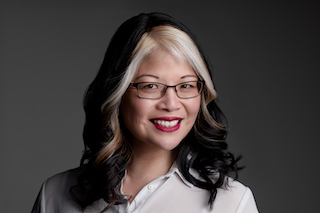 I’d like you to think of yourself as a glass…and the liquid inside represents the anxieties that you are containing. These may be your own through life’s roller coaster, they may be those of others – you might be a parent, a carer, a good friend, a leader.
I’d like you to think of yourself as a glass…and the liquid inside represents the anxieties that you are containing. These may be your own through life’s roller coaster, they may be those of others – you might be a parent, a carer, a good friend, a leader.Lesson 1 – you can see you can continue to take in anxieties – but without release, there will come a point where the glass overflows, and ceases to function as a glass.
Lesson 2 – if you hold onto the glass and DON’T take on more, but don’t empty it either – soon it will wear you down…and stop you functioning properly.
Lesson 3 – YOU are the one who chooses to put the glass down and recognise – it is simply unhealthy to be normalising low level stress to such an extent without dealing with it!
The way the body works is that we can take little practical steps to help us to do three key things
This is a very popular technique – at a point of stress actively look around and NAME:
5 things you can see
4 things you can hear
3 things you can touch
2 things you can smell
1 think you can taste
Don’t worry about the order of the senses, but just going through them and verbalising each observation gets you out of your head and thus helps stop any negative cycle of thinking, but also better connects you with the present, which is of course where we can best make effective decisions (rather than in a past we can’t change, or a future we can’t predict nor control).
This is a “DBT” (Dialectic Behaviour Therapy – Linehan) technique, where if you recognise you are getting overwhelmed:
Stop: …and reflect on what thoughts of insecurity drive you to do. Eg: get into a funk, throw
a pity party in your head, look for other jobs
Take a step back explore some of the consequences of the actions you have taken
and decide whether they serve you or not
Observe other options: Ask yourself: How might I behave if I didn’t have that thought
Proceed: From those behaviours – proceed with a different response (anything at all which is different to the habit which will just produce the same results)
Set boundaries
…and do this every day for a week – you will see some things and people always show up, some do not. Make a note of that AND THEN – actively seek to spend time with the people who “pop up” when you’re thinking gratefully, and you’ll find you can then, honestly, say “I’m sorry I’m busy” to the others, OR find that through spending time with the ones you love, the others – if unavoidable – are more manageable.
Now you have cleared some head space, it is important not to fill it with more of other people’s psychodramas!
When you think about your goals – use these prompts to think a little more broadly eg:
Now identify – What one thing little could the ideal me do now to make these things possible?
While you may feel that your “ideal” isn’t what you are living right now, remember that although you may be an excellent problem solver and a responder – you have the power to make choices and take action too. It doesn’t remove the need to react, it won’t remove the stressors unfortunately, BUT by knowing your “ideal you” AND taking little steps in embodying it, gives you a greater sense of empowerment…that you are choosing rather than only responding (no matter how good you are at the latter). By choosing, you can better shape how you want to live, and embed the confidence in yourself that you will get there.
 About the author
About the authorDr Audrey Tang is a chartered psychologist, wellness expert and author of The Leaders Guide to Resilience.
